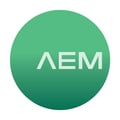KB36 What Does a "Star Pass" or *Pass Result Indicate?

This article provides information for your TestPro CV100 Multifunction Cable Certifier and Network Service Assistant (NSA) Multifunction Qualification+ tester related to test results which indicate an asterisk next to the Pass result, commonly referred to as a “Star Pass”.
AEM TestPro and the NSA provide an option to the user to report the result as PASS* when the margin is below a certain threshold. For the user, this outcome from a test is obviously confusing. Testing is expected to lead to a binary outcome: PASS or FAIL. So why have such vague option in the first place?
The origin of PASS*, or Marginal Pass, is in the early standardization activity for cable testing. In late 1990s, the cable testers had significant inaccuracies ranging to up to 1 dB for parameters such as NEXT or Return Loss. When the tester reported a PASS with a margin of say 0.5 dB, there was high uncertainty whether the cable actually passed, or whether did it fail by a small margin of less than 0.5 dB, and the tester’s inaccuracy caused it to report the result as PASS? The standards allowed the test equipment to report this uncertainty in the form of * or marginal result.
Modern Cable Certification testers now are far more accurate, and inherent uncertainty is much smaller, about 0.1 dB. In reality, this accuracy is good enough to eliminate the need to have PASS* results. However, in keeping with the tradition, and because of preference of some customers, TestPro does have an option to report PASS* results when the margin is within the accuracy spec.
Most measurements are carried out by taking advantage of the Autotest function of your tester, which automatically performs the required tests for the selected Test Limit/Standard. Possible results from the tester are:
- Pass
- *Pass
- Fail
- *Fail

When the test result of a required parameter is closer to the test limit than the measurement accuracy, the test result is marked with an asterisk (*).
- The *Pass and *Fail areas of uncertain measurements are often referred to as the “uncertainty zone”.
- *Pass indicates that the result is better than the specified limit but is within the accuracy margin for the test equipment. When a result which has a *Pass for one parameter, but all other parameters are a Pass, it is possible to accept this result as a pass, but it is not recommended. The recommended action is to treat the test result as a Fail and troubleshoot accordingly using the additional diagnostic tools on your TestPro, such as NEXT Locator or RL Locator to determine where along the cable the issue is. After locating the point along the cable (typically one end or the other), a re-termination or re-dressing how the cable lies may result in producing a Pass result.
- *Fail indicates a failed test but that the result relative to the pass/fail limit is within the accuracy margin for the test equipment. *Fail should be treated the same as a Fail.
- It is typically required that the installer and the client agree upon how a marginal (*Pass / *Fail) result will be addressed. Consult the scope of work specifications and/or applicable standard.
Some of the information presented above can be found in the BICSI ICT Installation Practices Field Guide Volume 2 – Copper Cabling, 2nd Edition. This Field Guide is highly recommended and also includes important information about troubleshooting cable test failures. The guide is one of a three volume series, including Volume 1 - General Cabling and Volume 3 – Optical Fiber Cabling. For ordering information, please visit www.bicsi.org .
To download a PDF of this Knowledge Base article, please click here.
